Dual-Polarized Metasurface-Integrated Antenna for Integrated Imaging of LWIR Camera and SAR
Abstract
1. Introduction
2. Materials and Methods
2.1. Dual-Polarized MIA Structure
2.2. Dual-Polarized MIA Design
2.2.1. Metasurface Principle
2.2.2. Design of Metasurface
- (1)
- Dual-linearly polarized metasurface unit
- (2)
- Dual-circularly polarized metasurface unit.
3. Results and Discussion
3.1. Dual-Linearly Polarized MIA
3.2. Dual-Circularly Polarized MIA
4. Conclusions
Author Contributions
Funding
Data Availability Statement
Conflicts of Interest
References
- Yang, J.Y.; Hu, Q.; Li, W.J.; Song, Q.; Cai, Z.W.; Zhang, X.Y.; Wei, H.D.; Wu, W.B. An automated sample generation method by integrating phenology domain optical-SAR features in rice cropping pattern mapping. Remote Sens. Environ. 2024, 314, 114387. [Google Scholar] [CrossRef]
- Zhao, C.Y.; Chen, L.Q.; Yin, Y.P.; Liu, X.J.; Li, B.; Ren, C.F.; Liu, D.L. Failure Process and Three-Dimensional Motions of Mining-Induced Jianshanying Landslide in China Observed by Optical, LiDAR and SAR Datasets. GIS Remote Sens. 2023, 60, 2268367. [Google Scholar] [CrossRef]
- Zhang, Y.R.; He, B.B.; Chen, R.; Zhang, H.G.; Fan, C.Q.; Yin, J.P.; Li, Y.X. The Potential of Optical and SAR Time-Series Data for the Improvement of Aboveground Biomass Carbon Estimation in Southwestern China’s Evergreen Coniferous Forests. GIS Remote Sens. 2024, 61, 2345438. [Google Scholar] [CrossRef]
- Onojeghuo, A.O.; Onojeghuo, A.R.; Cotton, M.; Potter, J.; Jones, B. Wetland Mapping with Multi-Temporal Sentinel-1 & -2 Imagery (2017–2020) and LiDAR Data in the Grassland Natural Region of Alberta. GIS Remote Sens. 2021, 58, 999–1021. [Google Scholar]
- Fu, X.F.; Sun, Q.Y.; Feng, H.; Tang, Y.; Tang, Y. 8X Enhanced Optical Imaging System. OME Inf. 2011, 28, 1–4. (In Chinese) [Google Scholar]
- The Haishou-1 Radar Satellite (The World’s First Ultra-Low Orbit Sar Satellite) Designed and Developed by Hainan, Has Achieved Successful Imaging. Available online: https://www.wchtc.net/xinwen/2024/show-4434.html (accessed on 16 December 2024).
- Brusgard, T.C.; Mccormick, T.C.; Sijgers, H.K.; Smith, C.T.; Winterble, W.C.; Schwerdt, C.B. Millimeter Wave and Infrared Sensor in a Common Receiving Aperture. US005214438A, 25 May 1993. [Google Scholar]
- Wu, W.D.; Zhang, B.; Hong, Y.F.; Zhang, Y.X. Design of co-aperture antenna for airborne infrared and synthetic aperture radar. Chin. Optics 2020, 13, 595–604. (In Chinese) [Google Scholar]
- Hu, J.J.; Dong, Z.H.; Yang, X.W.; Xia, L.R.; Chen, X.Q.; Lu, Y. Design of an integrated imaging system of airborne SAR and optical camera based on common aperture antenna. Opt. Express 2024, 32, 22508–22524. [Google Scholar] [CrossRef] [PubMed]
- Li, R.C.; Feng, L.J.; Xu, K.J.; Wang, N.; Fan, X.W. Optical design of an integrated imaging system of optical camera and synthetic aperture radar. Opt. Express 2021, 29, 36796–36812. [Google Scholar] [CrossRef]
- Zhang, N.; Chen, K.; Zhao, J.; Hu, Q.; Tang, K.; Zhao, J.M.; Jiang, T.; Feng, Y.J. A Dual-Polarized Reconfigurable Reflectarray Antenna Based on Dual-Channel Programmable Metasurface. IEEE Trans. Anten. Propag. 2022, 70, 7403–7412. [Google Scholar] [CrossRef]
- Duan, K.; Chen, K.; Zheng, Y.; Jiang, T.; Zhao, J.; Feng, Y. Low-Scattering and Dual-Polarized Reconfigurable Reflectarray Antenna Based on Absorptive and Active Coding Metasurfaces. IEEE Trans. Anten. Propag. 2024, 72, 2490–2501. [Google Scholar] [CrossRef]
- Wu, L.X.; Hu, Q.; Luo, X.Y.; Zhao, J.M.; Jiang, T.; Chen, K.; Feng, Y.J. Wideband Dual-Feed Dual-Polarized Reflectarray Antenna Using Anisotropic Metasurface. IEEE Anten. Wirel. Propag. Lett. 2022, 21, 129–133. [Google Scholar] [CrossRef]
- Sun, T.; Hu, J.P.; Zhu, X.J.; Xu, F.; Wang, C.H. Broadband Single-Chip Full Stokes Polarization-Spectral Imaging Based on All-Dielectric Spatial Multiplexing Metalens. Laser Photonics Rev. 2022, 16, 2100650. [Google Scholar] [CrossRef]
- Shalaginov, M.Y.; An, S.; Zhang, Y. Reconfigurable all-dielectric metalens with diffraction-limited performance. Nat. Commun. 2021, 12, 1225. [Google Scholar] [CrossRef]
- Li, P.; Zhao, F.J.; Liu, D.C.; Ou, N.M.; Cao, C.B.; Liu, X.Q.; Zhang, Y.Y.; Deng, Y.K.; Wang, R. First Demonstration of Hybrid Quad-Pol SAR Based on P-Band Airborne Experiment. IEEE Trans. Geosci. Remote Sens. 2021, 60, 5209016. [Google Scholar] [CrossRef]
- Zhao, F.; Lu, R.; Chen, X.; Jin, C.; Chen, S.; Shen, Z.; Zhang, C.; Yang, Y. Metalens-Assisted System for Underwater Imaging. Laser Photonics Rev. 2021, 15, 2100097. [Google Scholar] [CrossRef]
- Yu, N.; Capasso, F. Flat optics with designer metasurfaces. Nat. Mater. 2014, 13, 139–150. [Google Scholar] [CrossRef]
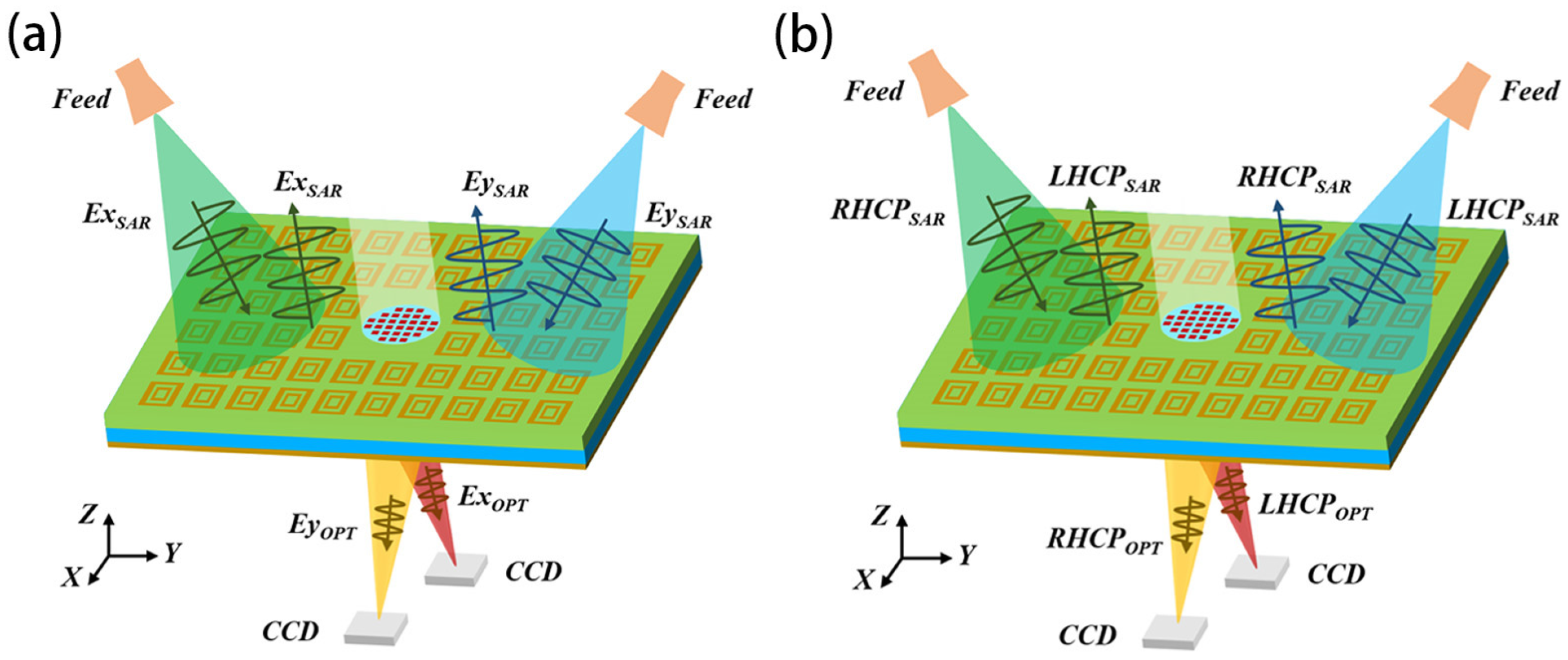
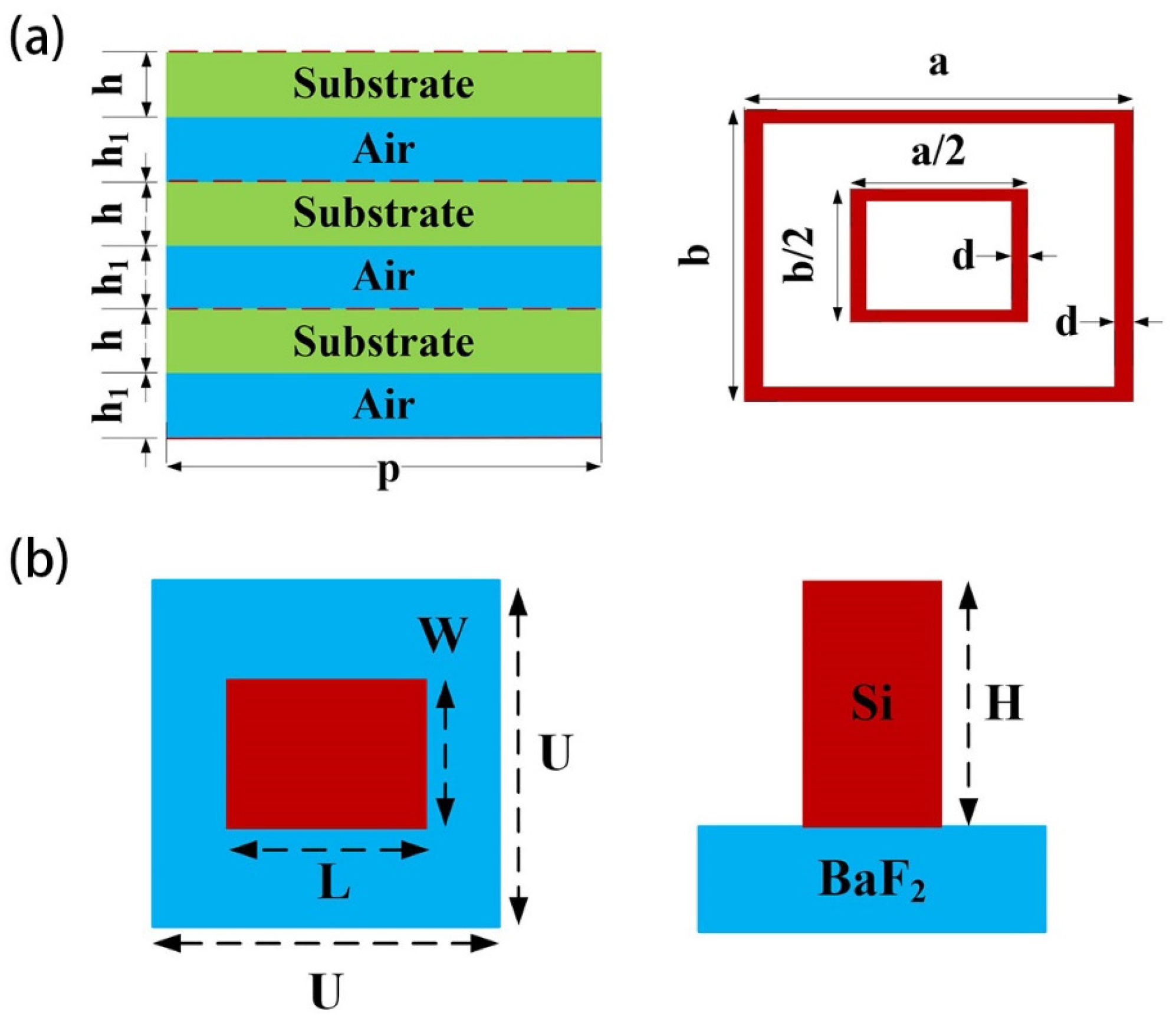
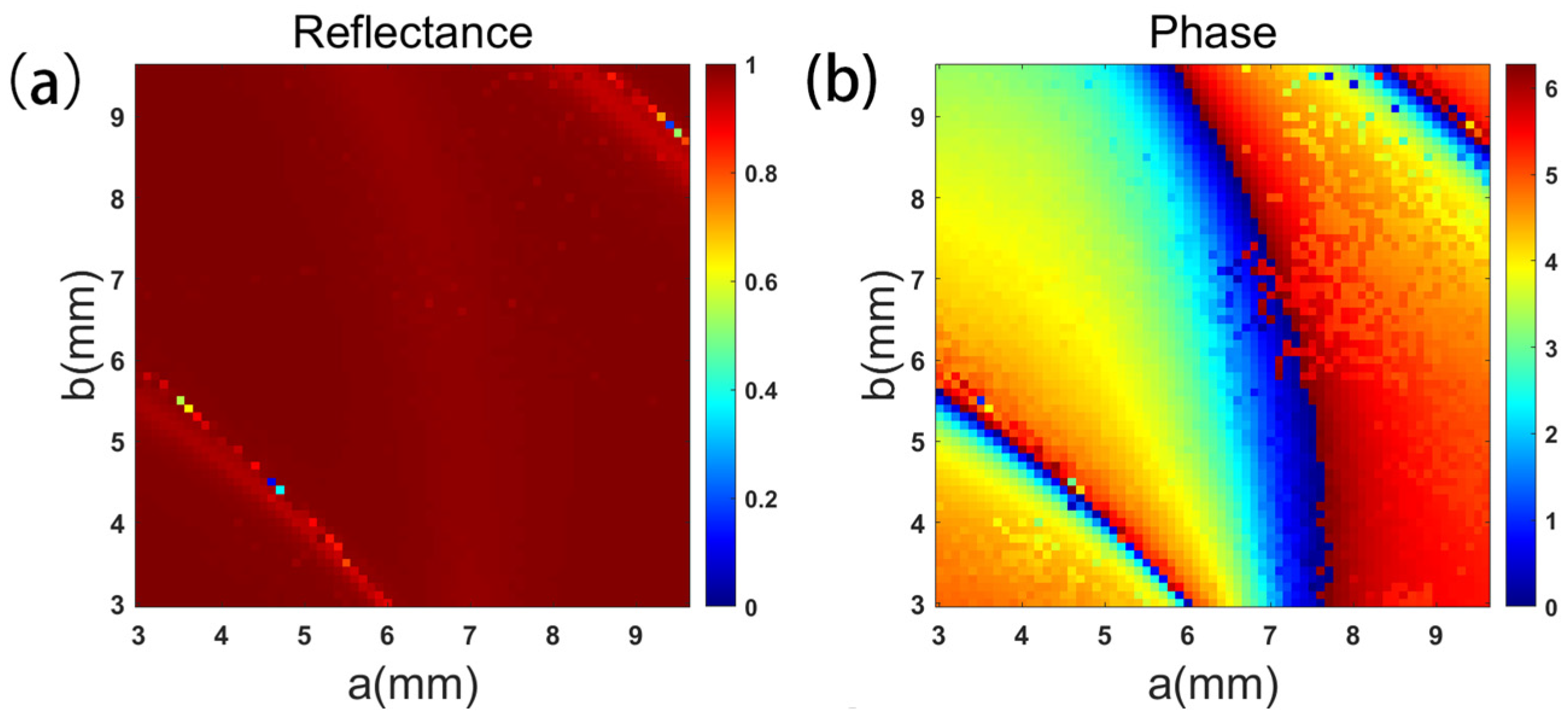

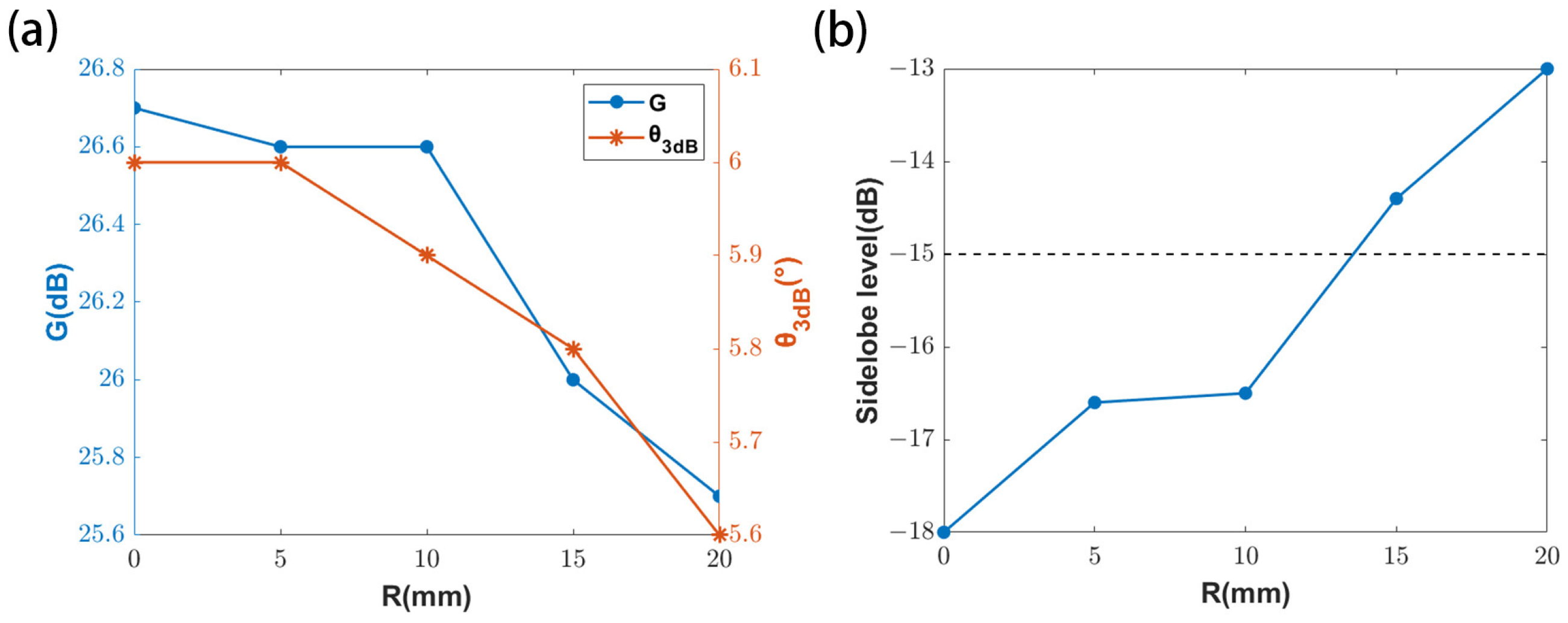
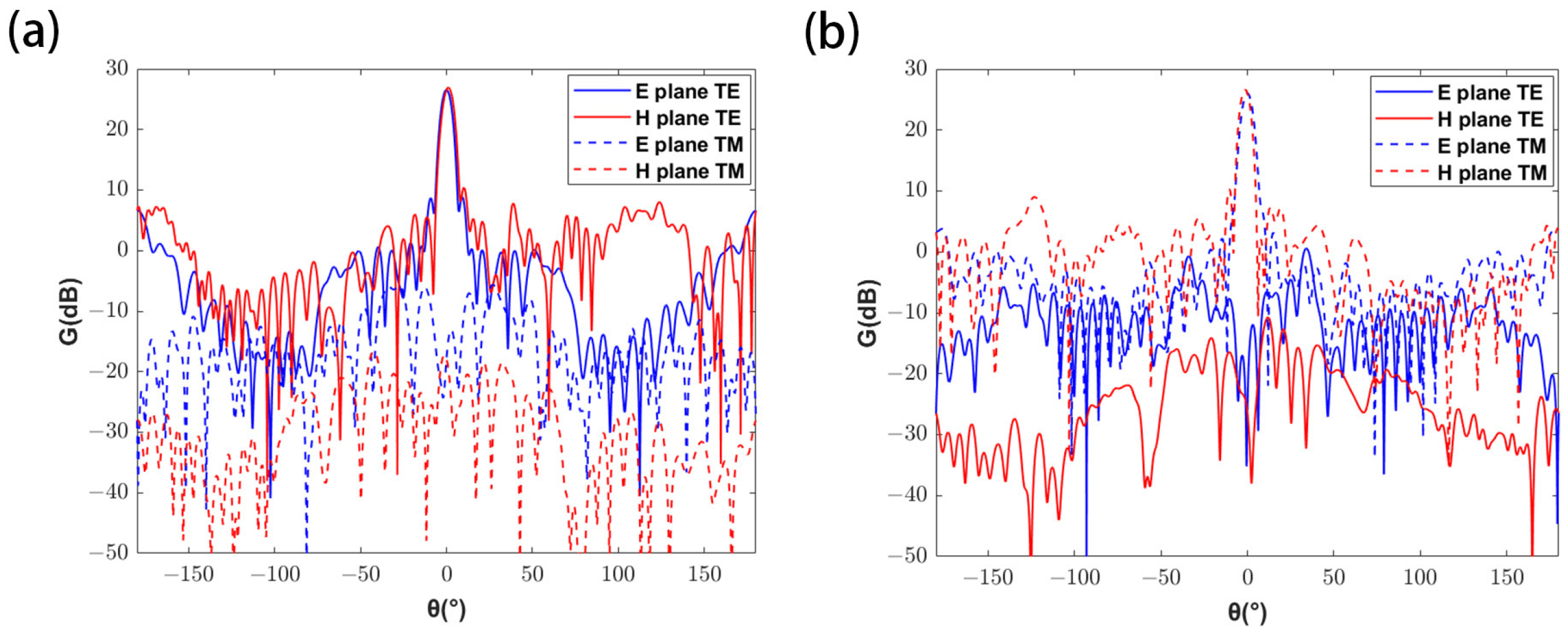
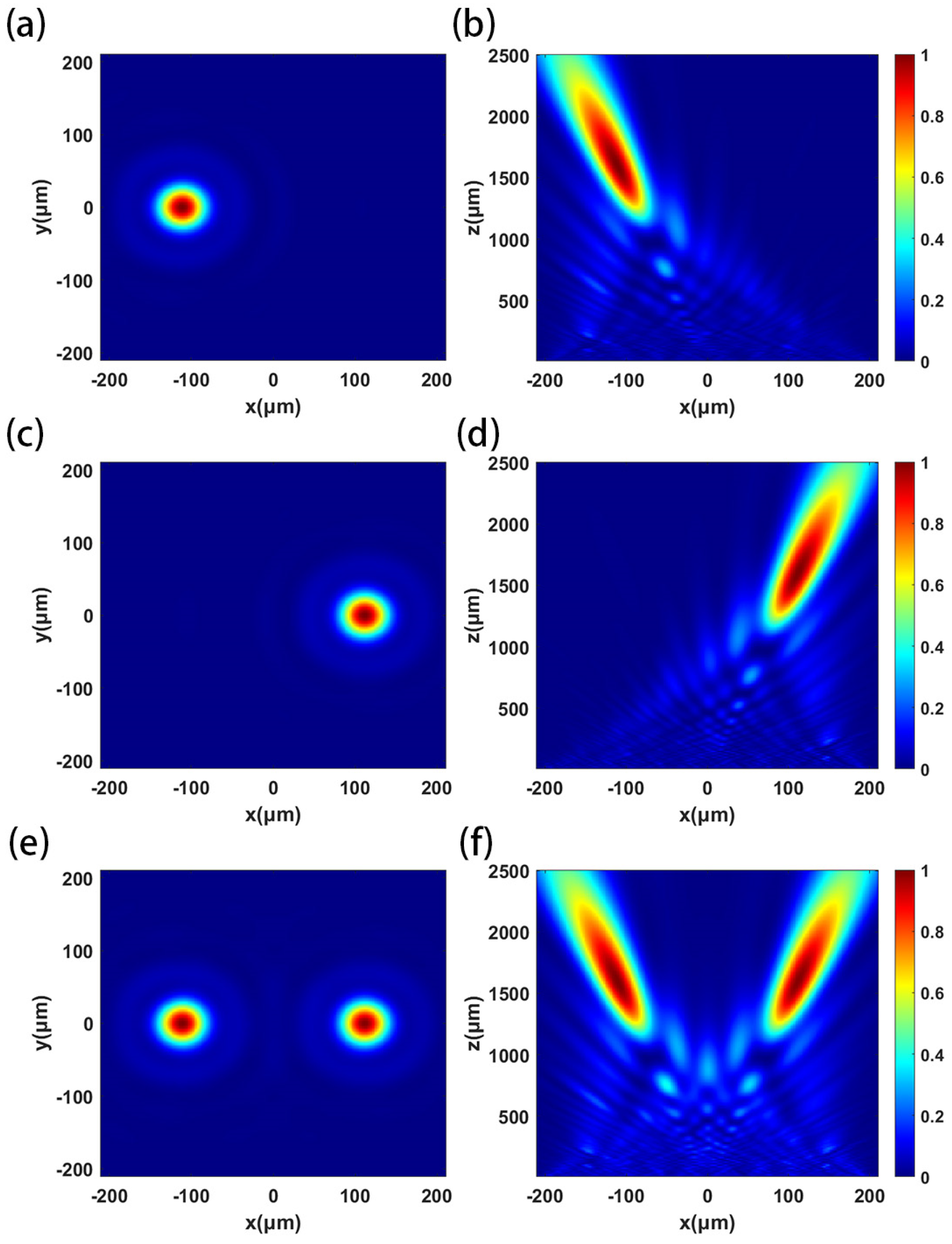
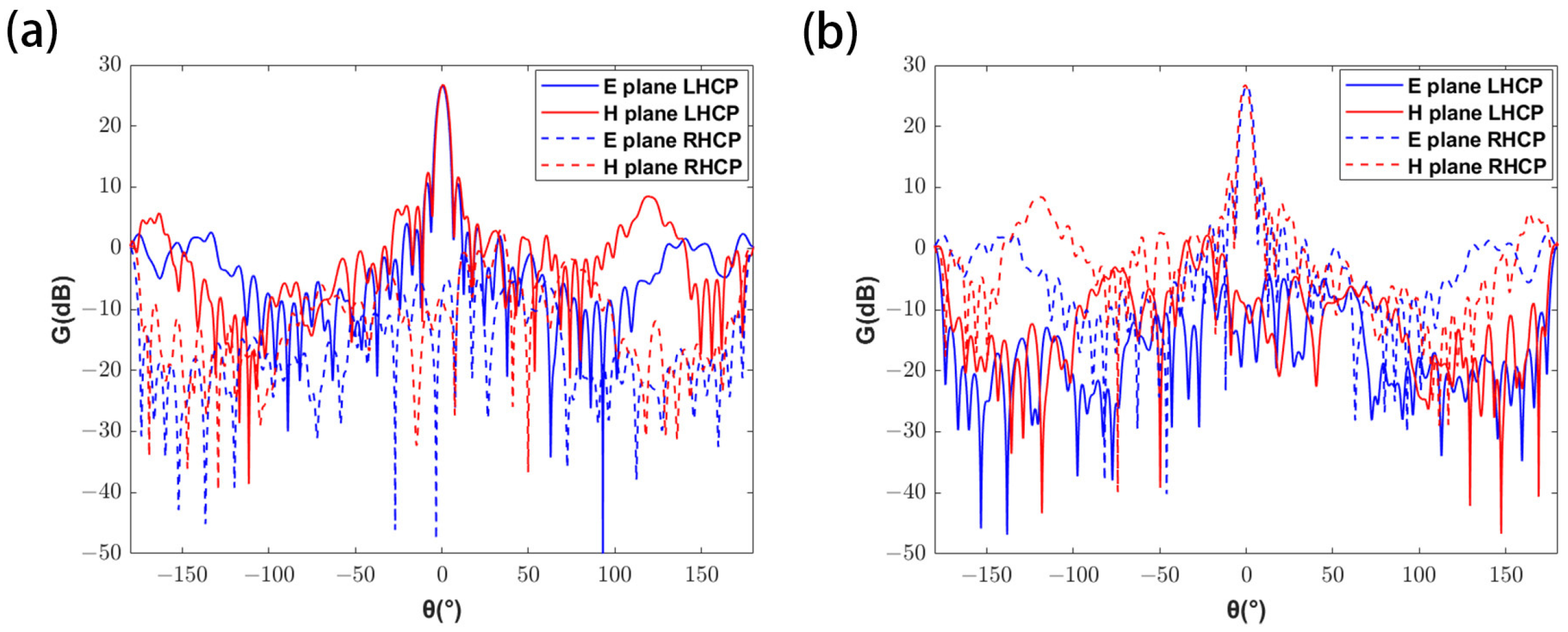
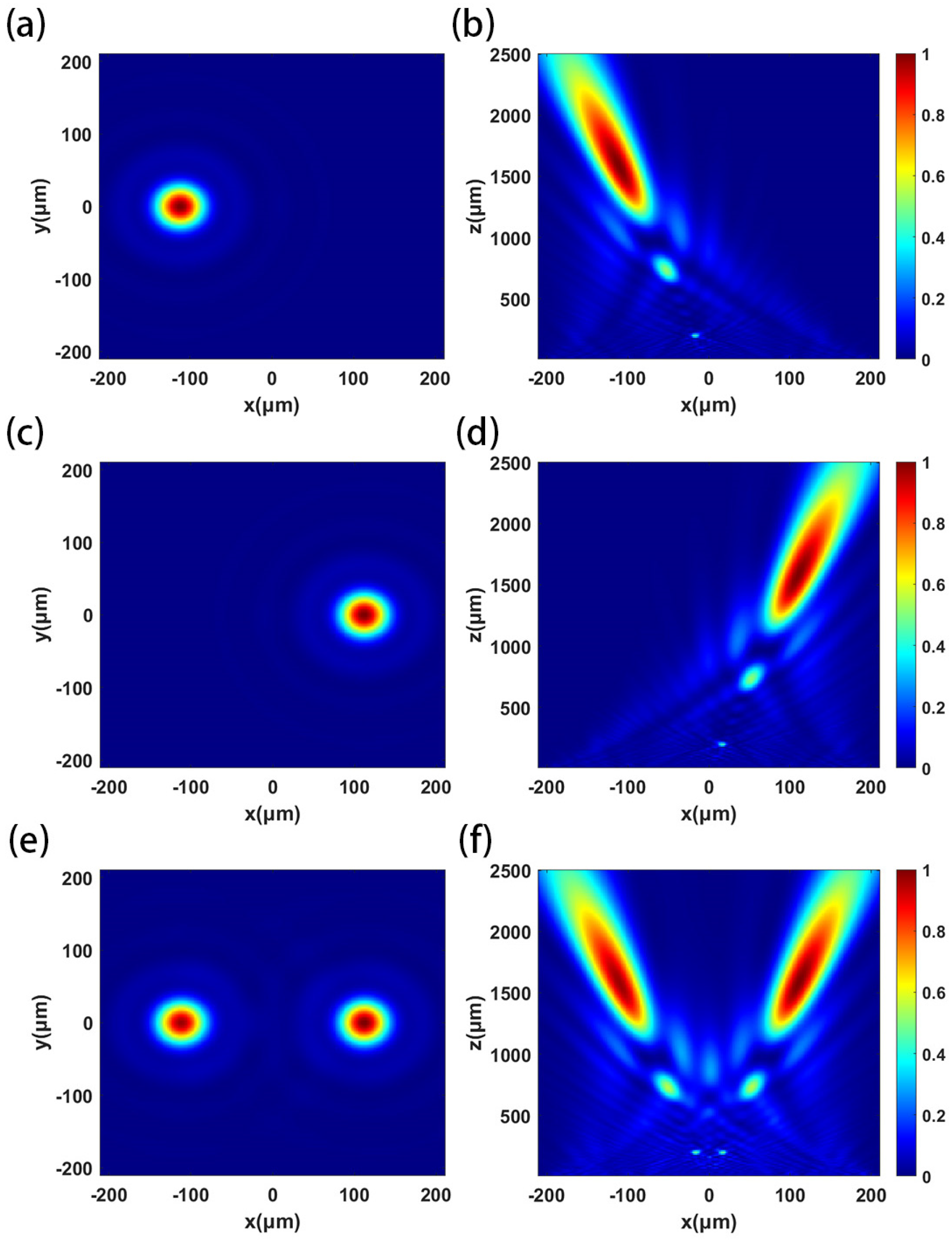
| Metalens | Parameters | L/μm | W/μm | H/μm | U/μm | ||
| Value | [1,5] | [1,5] | 8 | 6 | |||
| Antenna | Parameters | a/mm | b/mm | d/mm | h/mm | h1/mm | p/mm |
| Value | [3,9.6] | [3,9.6] | 0.3 | 1 | 1 | 10 |
Disclaimer/Publisher’s Note: The statements, opinions and data contained in all publications are solely those of the individual author(s) and contributor(s) and not of MDPI and/or the editor(s). MDPI and/or the editor(s) disclaim responsibility for any injury to people or property resulting from any ideas, methods, instructions or products referred to in the content. |
© 2025 by the authors. Licensee MDPI, Basel, Switzerland. This article is an open access article distributed under the terms and conditions of the Creative Commons Attribution (CC BY) license (https://creativecommons.org/licenses/by/4.0/).
Share and Cite
Hu, J.; Dong, Z.; Xia, L.; Chen, X. Dual-Polarized Metasurface-Integrated Antenna for Integrated Imaging of LWIR Camera and SAR. Micromachines 2025, 16, 202. https://doi.org/10.3390/mi16020202
Hu J, Dong Z, Xia L, Chen X. Dual-Polarized Metasurface-Integrated Antenna for Integrated Imaging of LWIR Camera and SAR. Micromachines. 2025; 16(2):202. https://doi.org/10.3390/mi16020202
Chicago/Turabian StyleHu, Jijian, Zhenghong Dong, Lurui Xia, and Xueqi Chen. 2025. "Dual-Polarized Metasurface-Integrated Antenna for Integrated Imaging of LWIR Camera and SAR" Micromachines 16, no. 2: 202. https://doi.org/10.3390/mi16020202
APA StyleHu, J., Dong, Z., Xia, L., & Chen, X. (2025). Dual-Polarized Metasurface-Integrated Antenna for Integrated Imaging of LWIR Camera and SAR. Micromachines, 16(2), 202. https://doi.org/10.3390/mi16020202






